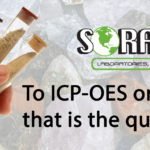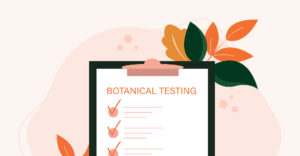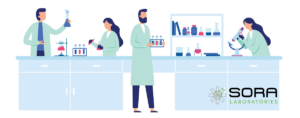To be labeled organic, foods and botanicals must be certified as such by the USDA. Since there are strict standards in place for growing and processing these ingredients, many fertilizers, insecticides, herbicides and fungicides in conventional farming are prohibited in organic production. This even includes pre-treated fungicides on seeds.1 With so many restrictions in place for organic labeling, organic/non-toxic fungicides are being used, although sometimes proving ineffective in killing fungi. With this in mind, how can a manufacturer or brand mitigate their risk when purchasing and using ingredients that are labeled organic? The answer resides in testing.
Since organic/non-toxic fungicides are being used, it is imperative to ensure that these fungicides are actually effective in preventing mycotoxins formation. Mycotoxins are secondary metabolites produced by microfungi that are capable of causing disease and illness.2 Research shows that aflatoxin is the most common mycotoxin found in spices and herbs.3 Aflatoxins are produced from fungi that hasn’t been properly controlled. This leads to toxins being present in grains, nuts, herbs or other susceptible plants, calling for careful screening of aflatoxins when using botanical ingredients in products. Screening can be done with a general ELISA aflatoxin kit that measures total aflatoxin levels and gives an indication of toxins present in the material. There are also specific tests by HPLC or HPLC-MS technology which give exact levels of B1, B2, G1, G2 or other toxins. Most often, general screening is completed on incoming botanical materials to see if aflatoxin is present, and then follow-up testing is ordered to determine the specific levels of each toxin.
Since organic fertilizers can introduce harmful bacteria to the foods or botanicals being grown, monitoring the bacteria contamination with stringent microbiology testing, is necessary. Testing botanical ingredients for total plate count, coliform, Escherichia coli, yeast, mold and salmonella is a good place to start. These counts will give you valuable information about the cleanliness of the organic herbal when it arrives at your facility. Since microbiology contamination can happen anytime throughout the manufacturing process, additional microbiology testing needs to be completed before final release to the market.
Since the farming techniques for organics do not allow for commercial pesticides, run-off and contamination from other farms should be considered. And while there are many other tests to consider for organic ingredients, screening for pesticide residue is a good idea to ensure contamination has not happened.
Botanical ingredients introduce a level of complexity not previously experienced when using other ingredients in nutritional products and working with those labeled organic, poses additional challenges. Determining the needed testing can be complicated (Botanical Blog) but SORA Labs can help you determine the appropriate testing services needed for each ingredient. Don’t stress—let us help you with your testing needs today!
- Guide for Organic Crop Producers, pg. 7. ams.usda.gov/nop
- Bennett, J. W., and M. Klich. “Mycotoxins.” Clinical Microbiology Reviews3 (2003): 497–516. PMC. Web. 31 July 2017. https://www.ncbi.nlm.nih.gov/pmc/articles/PMC164220/
- The Scientific World Journal, Volume 2013 Article ID 874093.
http://dx.doi.org/10.1155/2013/874093






